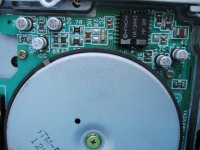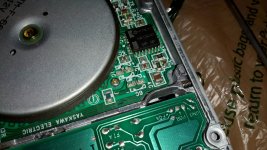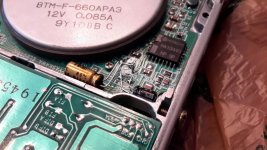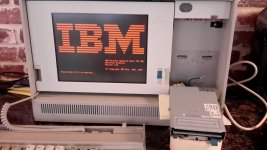Holmes
Experienced Member
I recently came into a wonderful IBM PS/2 P70, which I have always wanted. I knew it had POST errors 161 and 163 on buying, and hoped this could be fixed quickly.
When I first got it, it does a RAM check up to 8MB, and then shows POST errors 161 (CMOS configuration lost (battery has died)) and 163 (CMOS error; Clock is not updating).
I opened it up, and found it was quite clean, and there was no CMOS battery installed, so I purchased a new Duracell DL223A, and put it in. It still gives a 161 and 163 error.
I checked the battery lines with a DVM, and it says a clean 6.4 VDC all the way to the PCB connections (I even checked it when running).
I created several P70 reference disks on a spare Win98 laptop with a floppy drive, and ran REFSTAMP on those. After getting 161 163, I try the floppy and it sounds good initially, but then just spins forever, and when I eventually eject it, the P70 goes to cassette BASIC. The keyboard works fine, and I can enter in a program, list it, renumber it, and run it without issue.
It came with modem and network cards, and I removed them. I tried replacing the nasty sounding ESDI hard drive with a working spare, and no difference. I eventually unplugged the hard drive completely, and there's no difference, still 161 and 163 POST errors.
I also tried removing all the RAM sticks (it has 4 sticks), and tried putting in only 1 stick (and I tried 2 of the original 4 sticks) as the only stick. No difference, except the RAM check only goes to 2MB in those cases.
So I've done tons of internet searches, and am looking for help.
My first thought was that somehow there's a power draw making it look like there's no CMOS battery, but checking the board connections shows it is still 6+ volts when running. Shouldn't replacing the battery cause the 161 error to go away, and just leave the 163 error?
It's also likely my floppy drive needs capacitor replacement, but that just affects its inability to boot from my created reference disks. I keep coming back to thinking that the continued 161 error is the problem.
Can someone help?
When I first got it, it does a RAM check up to 8MB, and then shows POST errors 161 (CMOS configuration lost (battery has died)) and 163 (CMOS error; Clock is not updating).
I opened it up, and found it was quite clean, and there was no CMOS battery installed, so I purchased a new Duracell DL223A, and put it in. It still gives a 161 and 163 error.
I checked the battery lines with a DVM, and it says a clean 6.4 VDC all the way to the PCB connections (I even checked it when running).
I created several P70 reference disks on a spare Win98 laptop with a floppy drive, and ran REFSTAMP on those. After getting 161 163, I try the floppy and it sounds good initially, but then just spins forever, and when I eventually eject it, the P70 goes to cassette BASIC. The keyboard works fine, and I can enter in a program, list it, renumber it, and run it without issue.
It came with modem and network cards, and I removed them. I tried replacing the nasty sounding ESDI hard drive with a working spare, and no difference. I eventually unplugged the hard drive completely, and there's no difference, still 161 and 163 POST errors.
I also tried removing all the RAM sticks (it has 4 sticks), and tried putting in only 1 stick (and I tried 2 of the original 4 sticks) as the only stick. No difference, except the RAM check only goes to 2MB in those cases.
So I've done tons of internet searches, and am looking for help.
My first thought was that somehow there's a power draw making it look like there's no CMOS battery, but checking the board connections shows it is still 6+ volts when running. Shouldn't replacing the battery cause the 161 error to go away, and just leave the 163 error?
It's also likely my floppy drive needs capacitor replacement, but that just affects its inability to boot from my created reference disks. I keep coming back to thinking that the continued 161 error is the problem.
Can someone help?






